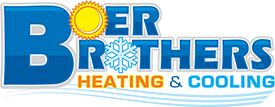The heating, ventilation and air conditioning (HVAC) system is the No. 1 user of electricity in your home. An HVAC system accounts for up to 58 percent of energy costs on a typical utility bill. If you are keeping your thermostat below 78 degrees in the summer, you can expect to have a higher bill. In fact, for every degree cooler, energy costs can increase 7 to 10 percent.
Higher heating and cooling costs are also caused by anything that makes your HVAC system work harder. Dirty AC filters, poor insulation, bad thermostats and air leaks can make your HVACs use a lot of energy to keep your home at comfortable temperatures. If you think your HVAC system is not running efficiently, use this checklist to help you conduct your own energy audit.
HVAC Energy Audit Checklist
- Set up appointment with heating/air conditioning professional.
- Set thermostat 78-80 (summer).Properly secure furnace panel door.
- Make sure coolant/Freon suction line is properly insulated (located outside by condenser).
- Replace dirty filter and make sure it’s inserted properly.
- Check for air leaks around plenum(plenum is located at the top of HVAC system) and if needed, repair with rated air duct tape.
- Check air ducts for air leaks, seal with rated air duct tape.
- Check insulation level in attic. Air leaks in your home caused by cracks in your walls or worn weather stripping around doors and windows could be causing your HVAC system touse more energy to cool the inside of your home.
- Use this checklist to make your home is free of air leaks.
- Air Infiltration Check seals around doors and windows. Replace caulking with new caulking.
- Feel around doors and windows and outlets/switches for drafts. (Seal with weather stripping and switch/outlets foam gaskets.) Insulate and weather strip attic access.
- Seal around plumbing with expanding foam. Check fireplace damper to make sure it’s closed when not in use.
- Seal air leaks around window-mounted air conditioning units.
